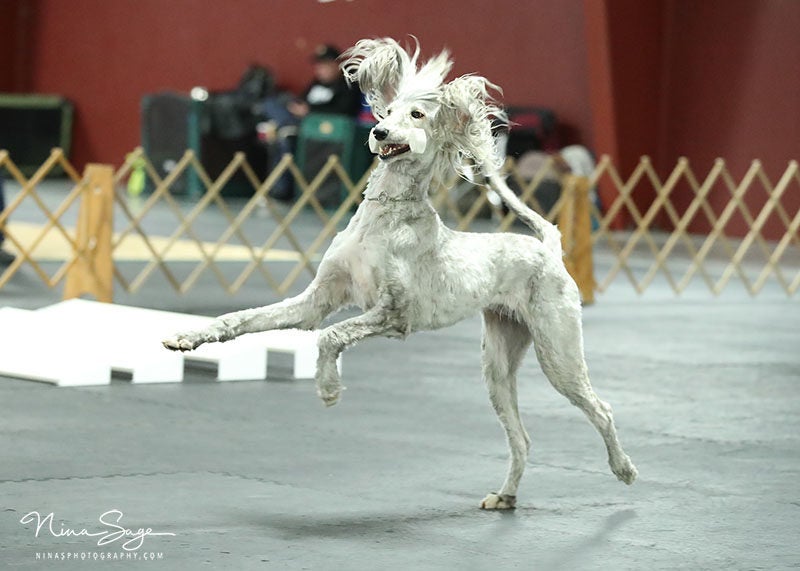
When you think about breeds competing in Obedience and earning a Utility Dog (UD) title, an Afghan Hound probably isn’t the first breed that comes to mind.
Count on Golden Retrievers, Shetland Sheepdogs, Border Collies, Labrador Retrievers, and German Shepherd Dogs to lead the pack of breeds who achieve UDs in obedience.
But Hope, a blue and white Afghan Hound owned by Gisela Bailey of Kendrick, Idaho, not only added these canine sports initials after her name but accomplished it four years after nearly dying.
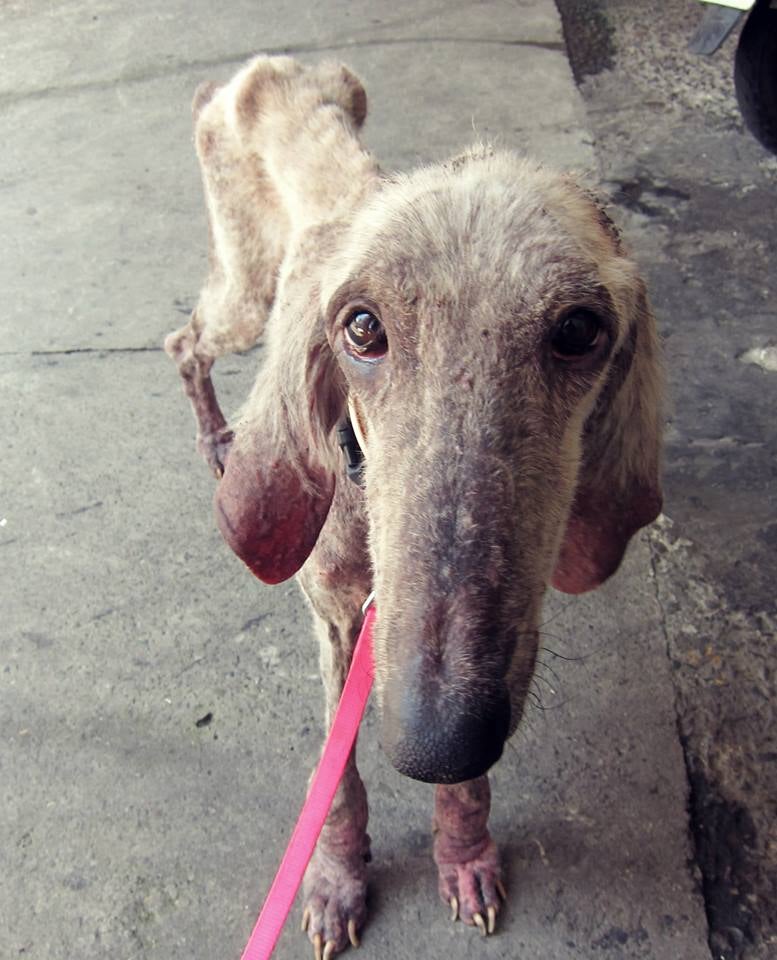
In the Know
How did this Sighthound go from a starving, emaciated dog with receding gums due to malnutrition, patches of hair with cracked and oozing skin, and sarcoptic mange, to a happy, healthy Afghan leaping over directed jumps and retrieving articles?
It wasn’t easy.
Like trying to herd cats, training an independent, self-oriented, free spirit Afghan to this elite level of obedience proves challenging. According to the Afghan Hound Club of America’s website, “Training an Afghan Hound for competition in obedience can be both a frustrating and rewarding experience. Afghan Hounds are very intelligent and learn quickly what you want them to do, but they often choose not to do it.”
Credit Bailey for Hope’s achievement. The owner has a long list of dogs with multiple titles she’s prepared them to earn in companion events. These include piloting three other dogs to UD titles — a Borzoi, Valeska Bistroi Bagrijan UD GO RE and two Afghans, Zuran’s Spiel der Balalaika CGC UD JC, and Karena JC RA UD NAJ OA.
“I’ve trained a lot of dogs in my life, but getting a dog solely to compete in obedience is never my first goal,” says Bailey. “I participate in obedience to have something to do with my dogs.”
But despite Bailey’s training expertise, Hope’s obedience career came close to never happening.
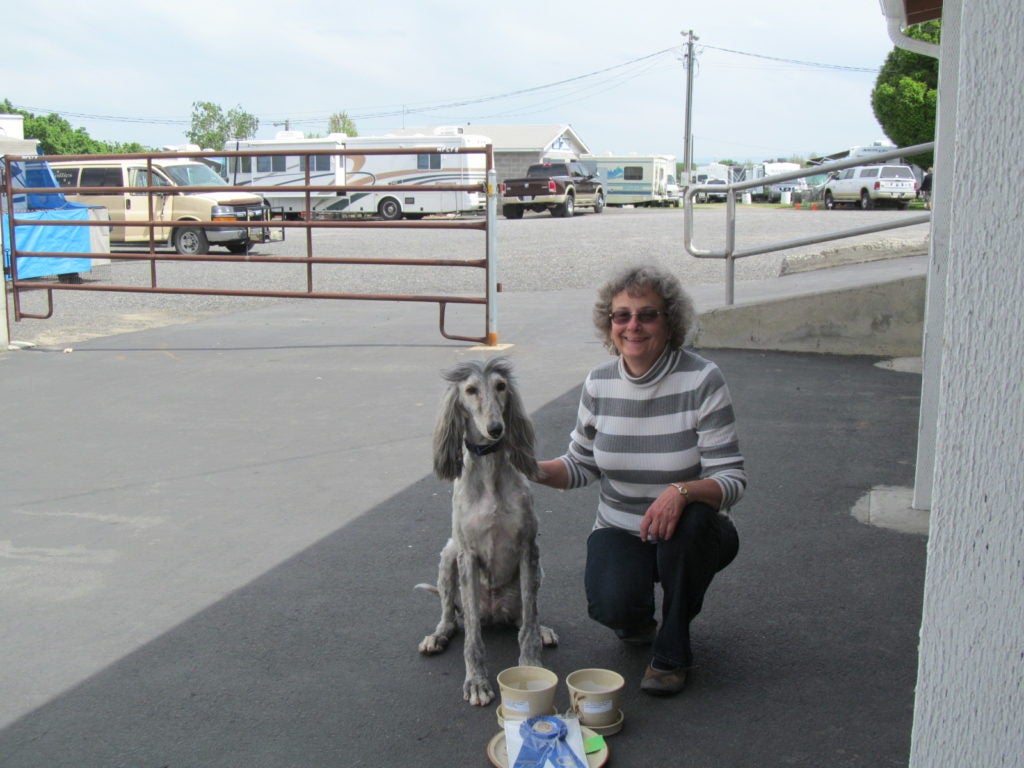
From Heck to Hello
In the past, I adopted an Afghan rescue puppy through Afghan Hound Rescue of Southern California, remembers Bailey. “The pup came from a bad situation in Las Vegas, so I knew the challenges of getting a dog with a rough start.”
For Bailey, hearing about an Afghan in need of a home this time was different. When the rescue sent a video of three Afghans on death’s door, Bailey wasn’t looking for another dog. “There was just something about the way Hope looked at the camera with such sad eyes that told me to say, ‘yes, I’ll take her.'”
Bailey communicated with Rita Kao, who rescued the dogs. Two of the Afghans were barely a year old, and Hope was three years old. Kao obtained and paid for the three dogs’ medical treatment and cared for them for three months until they were well enough to travel.
From the photos, the dogs looked horrible, recalls Bailey. “They hung their heads, and their eyes looked sunken, so I wasn’t sure they would survive long enough to come here,” says Bailey. “The dogs had little coat, and we couldn’t tell what color they were, but once the mange was gone, their coats were beginning to grow back, and they looked good.”
In January 2015, when Bailey picked up Hope, she never expected the dog to take to obedience. “I knew she had a hard life before coming to me and needed more time to heal and to adapt to her new surroundings, so I promised her I would never force her to do anything she didn’t want to do,” says Bailey.
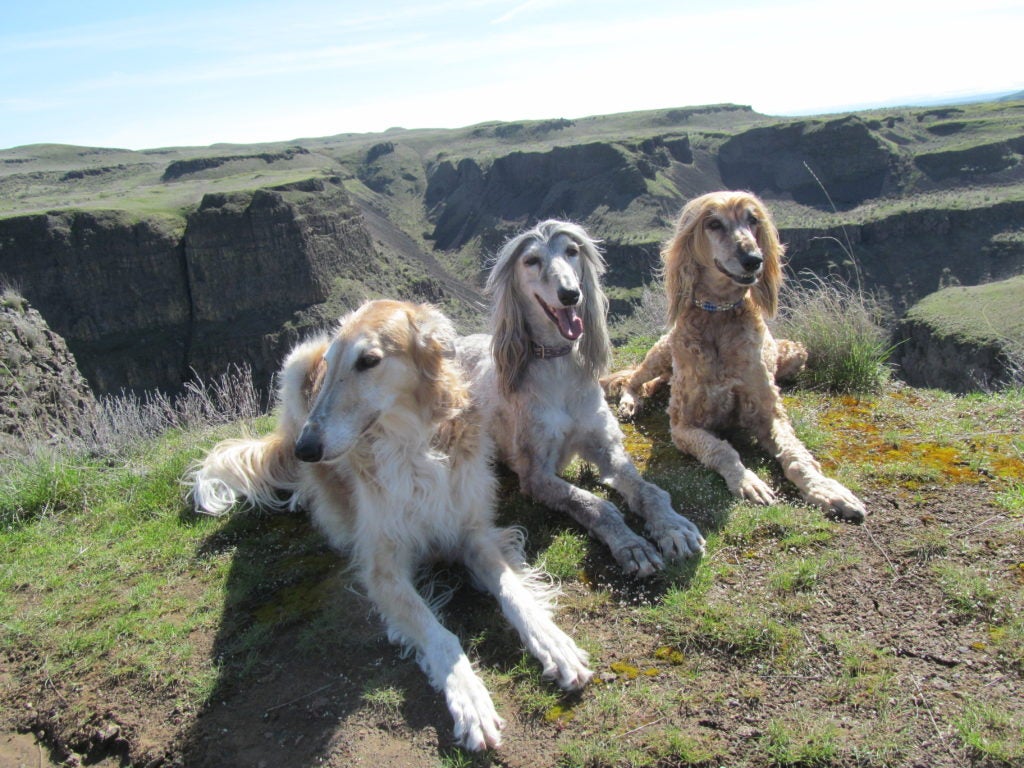
Getting Started
To help Hope acclimate to her new life, Bailey took the dog along on her daily two-mile, off-leash walks in the surrounding farmland with her Borzoi and Afghan housemates. On weekends, Bailey accompanied the canine trio into nearby woods for two- to three-hour hikes.
In the beginning, I thought she was still learning English, so I didn’t push any formal training but casually introduced her to some basics, says Bailey. “I use lots of treats and praise, but Hope prefers praise over food.”
What did this owner learn about training a dog who understood little English?
“It’s a waste of time to worry about exact words because dogs follow body language.”
Bailey also discovered that Hope gets along well with her three cats and enjoys meeting other dogs and people they encounter while hiking. “She’s a cat magnet and seldom lies down without her cats.”
In May 2015 and only four months after bringing Hope home, Bailey entered her in Beginner Novice, and the dog earned her first title.
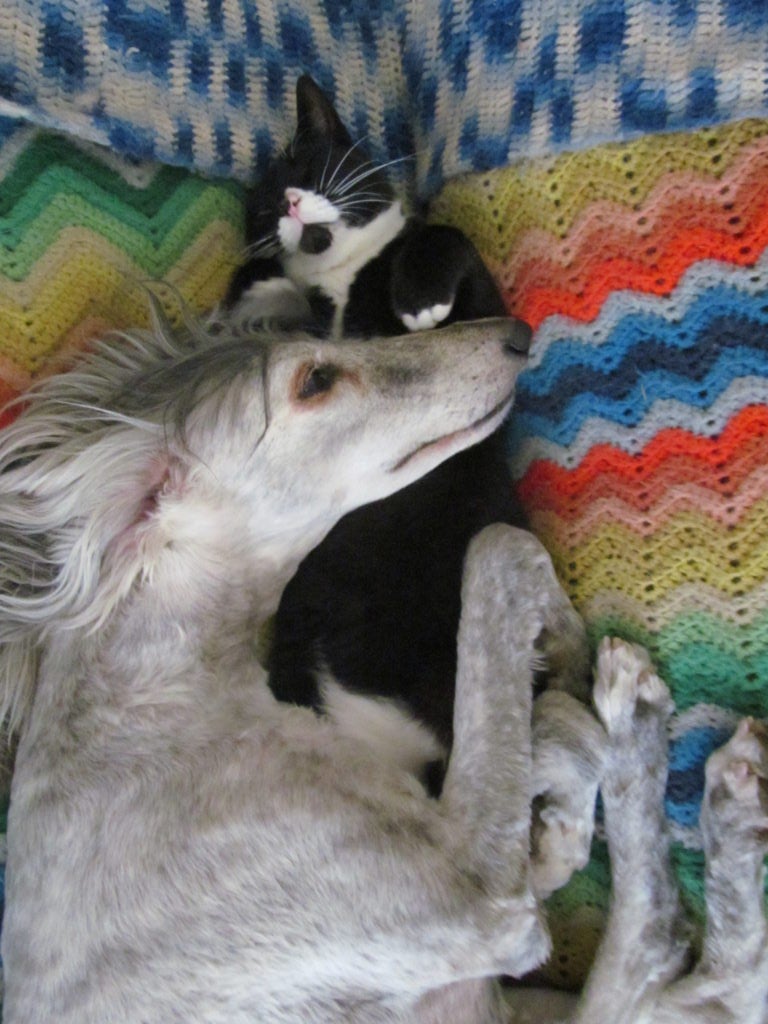
Onward and Upward
The following year, Hope added Companion Dog (CD) and Rally Novice (RN) titles after her newly-chosen AKC-registered name, Circle of Hope. In national ranking, she reached number one Afghan and number three Hound status in Novice Obedience for 2016.
In March 2018, Hope earned Companion Dog Excellent (CDX) and in July, she earned her Rally Advanced (RA) title.
In February, after receiving three qualifying scores under two different judges, Hope earned her Utility Dog (UD) title. Bailey has never tried to take a dog to the next level–a UDX (Utility Dog Excellent), but in April she entered Hope with that goal. Sadly, the Afghan refused to pick up the dumbbell or the glove as directed by Bailey. “I realized several of her teeth were loose due to the malnourishment she endured, so I took her to the veterinarian for necessary dental extractions,” says Bailey.
But a sore mouth wasn’t the only challenge Hope and Bailey ran up against while competing for a UDX. Living in the country, seven miles from the nearest town of only 300 people, offered few, if any, training distractions.
In obedience, training with distractions is necessary to help dogs learn to follow their handler’s cues regardless of what’s going on around them.
“It’s a quiet town, and few people walk in or out of a store, so not much goes on to divert Hope’s attention,” she says. “And if we practiced heeling or I threw a dumbbell in public, Hope was on a leash, which she wouldn’t wear during competition, so it didn’t simulate a ring experience.
Bailey created two other practice opportunities by setting up a ring at a friend’s house with her friend’s dog and Hope. “My friend and her Golden Retriever gave us one distraction, which was better than nothing, but not enough for competition and the other town wasn’t much bigger than our local one.”
Another hurdle to earning Hope’s UDX was the number of dog shows Bailey could enter within a reasonable driving distance from her home. “Nine weekends a year isn’t a lot.”
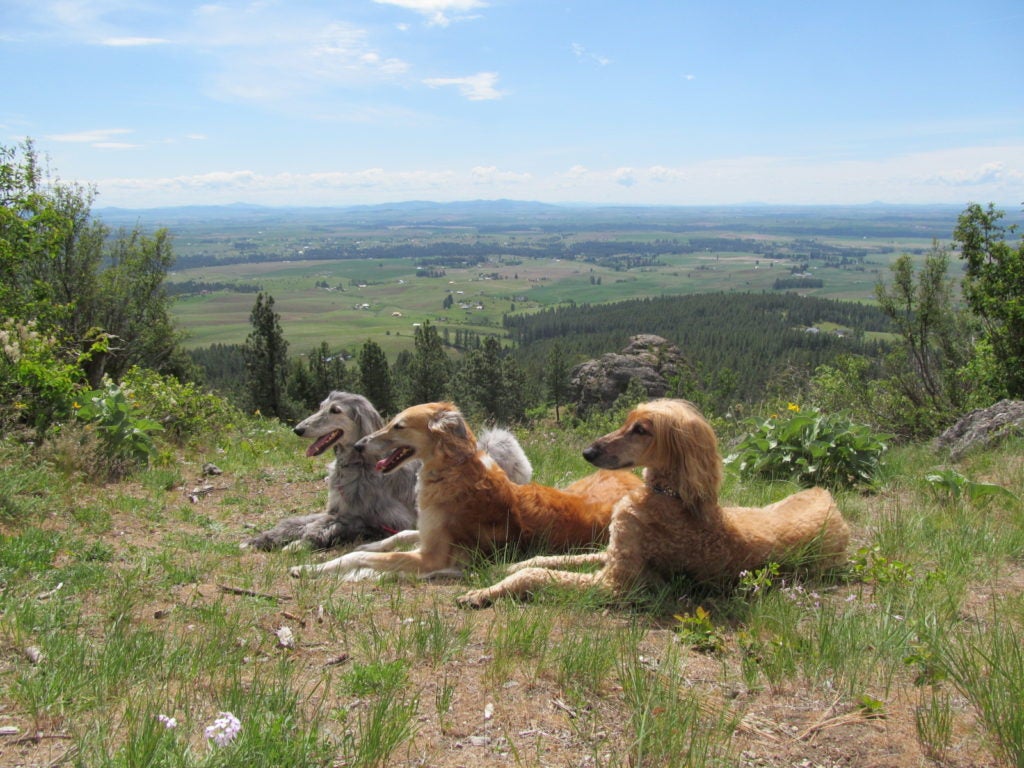
How to Train Your Dragon
Considering Hope’s history as a starving, mistreated rescue, the Afghan thrives on personal contact and likes to be held and petted.
“She wants to be with me all the time and gets so excited when I tell her, ‘good dog.'”
After training multiple Afghans, Bailey believes the breed shows a sensitive side. “If you raise your voice even a little they think it’s the end of the world and they shut down,” says Bailey. “People say Afghans don’t want to please you, but in the dog’s mind they think they’re doing exactly that.”
Bailey says the best way to train an Afghan is to learn all you can about your dog. “Afghans are subtle and not demonstrative, but in my case, I couldn’t have found a better dog if I had planned it.”
Find out more information about Afghan Hounds and Afghan Hound rescue here.
Want to try Obedience? Any dog can compete. Find out more information here.

